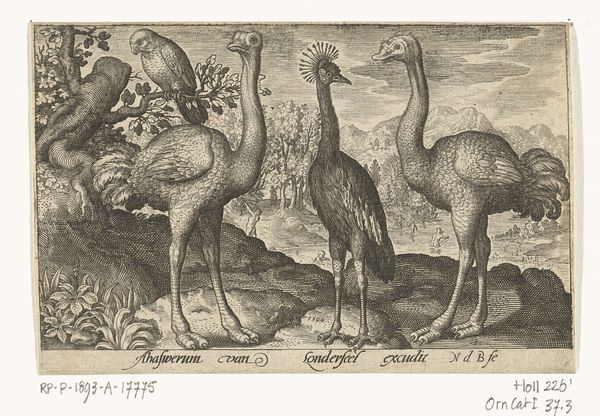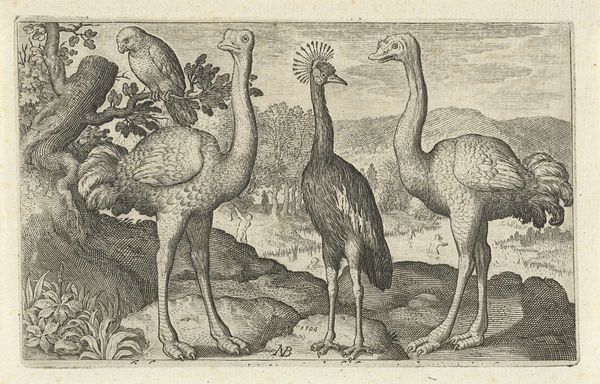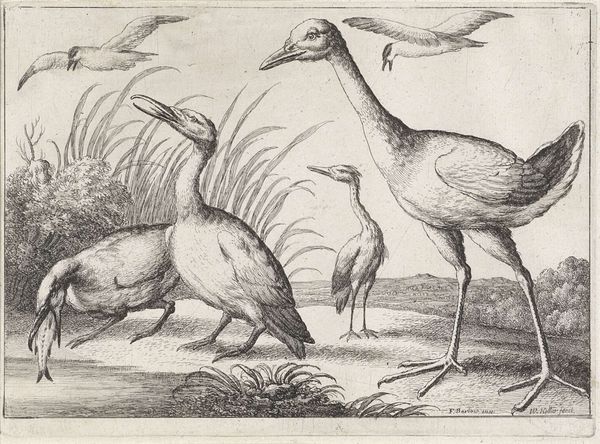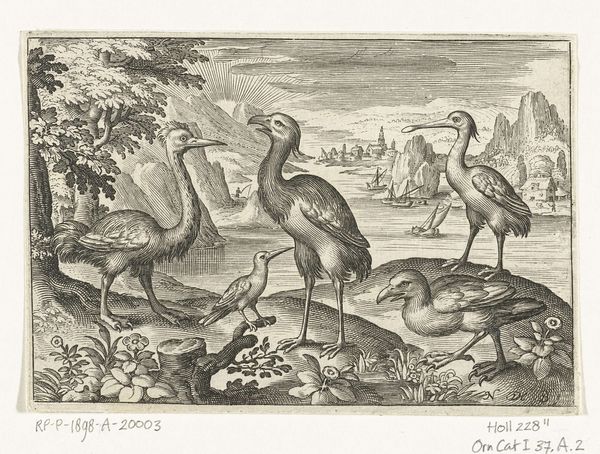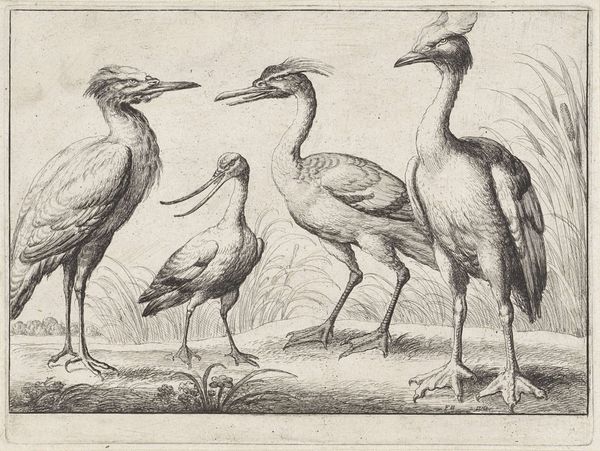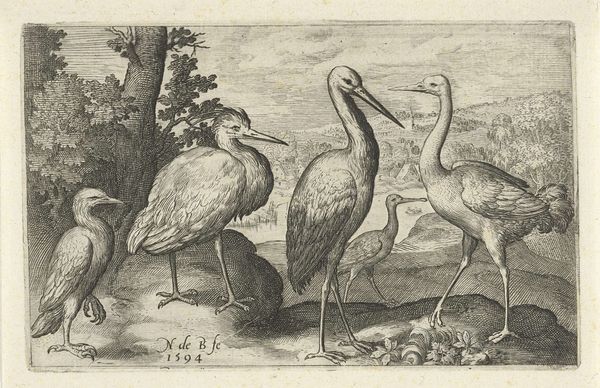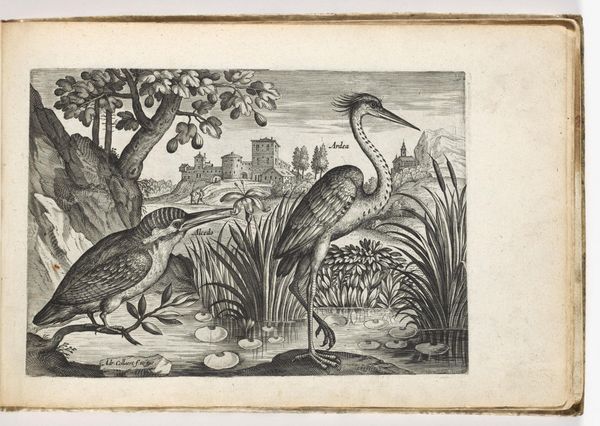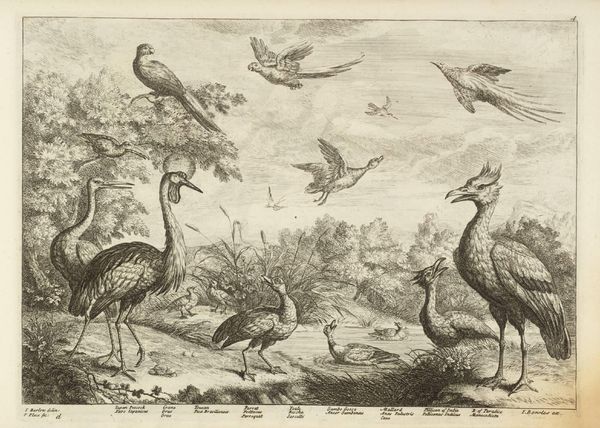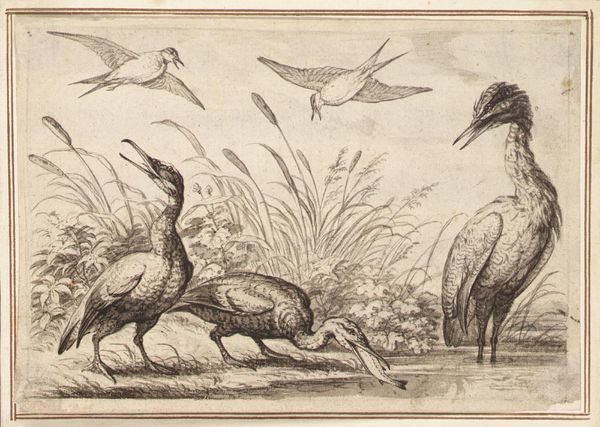
print, etching, ink, engraving
#
baroque
#
animal
# print
#
pen illustration
#
pen sketch
#
etching
#
pencil sketch
#
old engraving style
#
landscape
#
ink
#
engraving
Dimensions: height 137 mm, width 194 mm
Copyright: Rijks Museum: Open Domain
Curator: Well, if this doesn’t just shout ‘17th century cabinet of curiosities’ I don't know what does! I'm looking at "Two Ostriches and Some Parrots" created by Robert Gaywood in 1662. It's an engraving, teeming with meticulously rendered creatures and somewhat surreal landscaping. Editor: My first thought is… melancholy. They are exotic birds in what seems to be a meticulously etched captivity. It gives a real sense of confinement; they are posing rather than living, don’t you think? Curator: Yes, that's interesting. See, to me the melancholy stems from the wider historical context. European fascination with the exotic natural world grew massively during the Baroque era, fuelled by expanding global trade and colonial ambitions. Works like these were commissioned to both celebrate and visually consolidate control, depicting collected specimens more like possessions than living creatures. The ostriches standing proudly in front of, of all things, a pyramid just confirms how Europeans were consuming culture. Editor: Precisely. It's all about displaying a new and complete mastery over different worlds in one single frame! And Gaywood's technique contributes to this; the incredibly precise and detailed engraving style almost 'preserves' the scene, flattening out life into a scientific record rather than an encounter. Do you notice that? Curator: Oh, absolutely. The very fine lines of the etching allows for a sort of cataloging, as though he is displaying them more like taxidermied specimen or pinned butterflies. And there is definitely something disquieting about this need to possess. Editor: And even those lovely parrots tucked away in the left-hand corner appear somewhat resigned, wouldn't you agree? Their branches heavy with what seem like European apples while perched like silent spectators rather than joyous birds! It is almost as if he is hinting at his and our complicity in their unnatural confinement, the fruit itself hinting at this 'fall.' Curator: Right, the painting makes the viewer a participant to all of this exploitation and the consumption that made Europe very rich, very quickly. This really gave me a lot to chew on. Editor: Absolutely, a visual reminder that every 'discovery' always carries a shadow of someone, or some creature's dispossession.
Comments
No comments
Be the first to comment and join the conversation on the ultimate creative platform.
